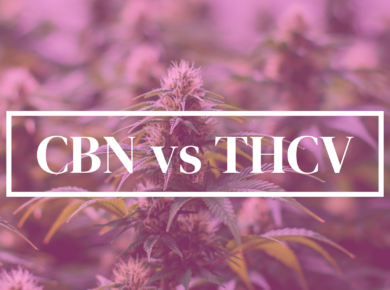CBD and CBDa are both naturally found in hemp and cannabis plants. The key distinction between these compounds lies in their origins and the roles they play.
CBD, often simply referred to as Cannabidiol, is renowned for its non-psychoactive nature. It’s derived from hemp and cannabis plants and is popularly infused into an array of products due to its potential interaction with the body’s endocannabinoid system.
On the flip side, CBDa, standing for Cannabidiolic Acid, acts as a precursor to CBD. Found in raw hemp or cannabis plants, it morphs into CBD once subjected to a process known as decarboxylation, typically involving heat.
From a molecular perspective, CBD and CBDa depict two evolutionary stages of the same compound. While CBDa is the raw, unaltered version, CBD emerges post the heating of CBDa. Both compounds have unique characteristics and potential applications. Nevertheless, it’s vital to acknowledge that in-depth research is still needed to fully grasp their implications.
Always remember, as with other cannabinoids, it’s essential to consult with a healthcare professional before using CBD or CBDa products. Many States allow hemp derived cannabinoids under the 2018 Farm Bill as long as they contain less than .3% D9 THC. Some States have explicitly banned cannabinoids like Delta 8, so check your local rules and regulations before purchasing.
Here’s the rules for Kush.com and more details
Frequently Asked Questions (FAQs)
What are CBD and CBDa?
- CBD, or Cannabidiol, is a non-psychoactive element found in hemp and cannabis plants, commonly used in oils, edibles, and other products. CBDa, its acidic predecessor, exists in raw hemp or cannabis plants until they face heat or sunlight, causing its conversion to CBD.
How is the extraction of CBD and CBDa from hemp carried out?
- Both CBD and CBDa are procured from hemp using analogous methods. The prevalent method, CO2 extraction, employs pressurized carbon dioxide to extract CBD or CBDa from the plant. It’s crucial to note that CBDa is extracted from raw, unheated plants, whereas CBD comes from decarboxylated material.
Can we find both CBD and CBDa in hemp products?
- Absolutely, both CBD and CBDa can be found in hemp products. However, most products are predominantly CBD-rich due to its wider recognition and research. Some products might contain a blend of both, especially those derived from raw hemp extracts.
What sets CBD apart from CBDa?
- The primary difference is their chemical structure and presence in the plant. CBDa is the raw form in the plant, which, when exposed to heat or sunlight, evolves into CBD through decarboxylation.
How do the effects of CBD and CBDa vary?
- While it’s beyond my scope to make medical assertions or cite medical benefits, it’s pivotal to recognize that CBD and CBDa engage differently with the body’s endocannabinoid system. CBD has been more extensively studied, whereas CBDa remains lesser-known. It’s advisable to seek guidance from a knowledgeable expert or delve into your own research when considering hemp products.
Shop
Similar Product Searches You Might Be Interested In:




